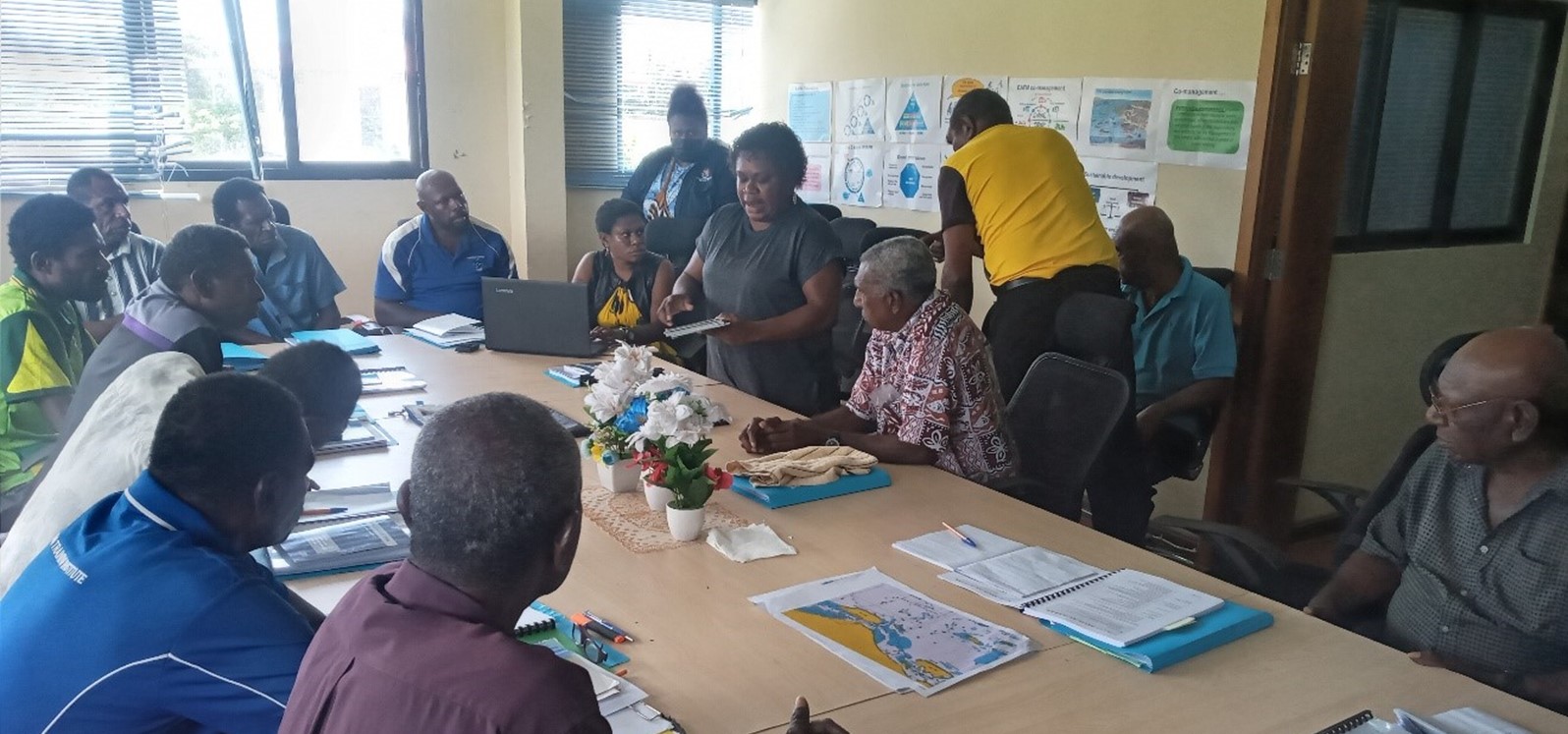In August of this year, the ATSEA-2 Project journeyed with the National Fisheries Authority to South Fly District in the Western Province of Papua New Guinea. Their aim was to discuss fisheries management issues through public consultation, as part of wider plans to develop an artisanal fisheries management plan. Community engagement and involvement are seen as crucial elements of this process.
The stakeholders of South Fly District were keen to take part and contribute their experience to the formulation of the management plan. They worked together with a team of specialists from the National Fisheries Authority, Eco-Custodian Advocates, and Conservation and Environment Protection Authority to discuss their respective views and concerns. One such issue was the observation that current fisheries management structure is geared towards the national level, whereas the majority of fishers live in coastal and rural areas. The artisanal fisheries management plan can therefore help to bridge the gap between national and community-based approaches.
The artisanal fisheries management plan sets out to address the proper management of fish stocks, habitats and ecosystems, and the use of various types of fishing gear. The plan was composed after a process of analysis in the ATS region, which included coastal villages in South Fly District. Each of the littoral nations of the ATS region took a certain approach to addressing issues like overharvesting of fish stocks; habitat loss; illegal, unregulated and unreported fishing (IUUF); land-based pollution; and the effects of climate change. Issues associated with climate have had a profound impact on coastal communities, particularly in small islands and local economies around the world, such as the Western Province of Papua New Guinea.
Other issues affecting marine resources are more measurable and can be tackled with local action. IUUF and habitat loss can be minimised through the introduction of the artisanal fisheries management plan; to that end, South Fly stakeholders were provided with basic information about approaches to the development of the plan, using a bottom-up approach to ensure coastal communities are empowered to act in marine resources management.
Human activities are the main factors contributing to loss and destruction of marine habitats, fish stocks and other marine resources. Stakeholders were keen to take a new approach to this issue through the collaborative development of the management plan. Existing laws were taken into consideration during the management draft, so that fisheries management issues could be addressed by the communities themselves. The new plan is expected to greatly assist stakeholders and coastal communities in managing their marine resources effectively.
The laws featured in the artisanal fisheries management plan draft are not exactly new – they are already familiar to most members of the communities. Here, bylaws have been put in place that guide and protect individual fishing grounds – some areas along the coast have bylaws that allow fishers to catch certain sizes of fish, while other communities have bylaws that restrict them from fishing during a certain period of time or within certain areas. Other villagers are subject to restrictions on the gear they use. All such information was collected during the consultation.
In addition, stakeholders identified new and emerging threats to their fishing grounds. Settlements within the Daru Island area were found to be catching fish with unregulated equipment, while illegal fish buyers were also recruiting fishermen to harvest certain high-value species (e.g., jewfish, which is exploited for its swim bladder). These coastal communities have begun to experience a decline in certain fish populations; previously, they were able to catch fish in large numbers, but nowadays the size of their catch is dwindling.
The consultation was a positive experience for the stakeholders. Many expressed their eagerness to see the draft plan finalised and developed into law, so that it can assist them in the management of their marine resources. Penalties for non-compliance with the artisanal fisheries management plan will be similar to the existing village court penalties.
The villagers from the coast of South Fly District, along with the district fisheries officer and provincial fisheries manager, expressed their gratitude to ATSEA-2 for consulting them in the draft process of the management plan. Special thanks were given to the ATSEA-2 team under the National Fisheries Authority, the ECA executive director and the consultant engaged in drafting the management plan. The CEPA team were also recognised for the guidance provided throughout the consultation process.
The artisanal fisheries management plan for the South Fly district is currently in its final review stage, as findings from the public consultation and stakeholder meeting are integrated into the final draft.
(By Joe Kiningi)



